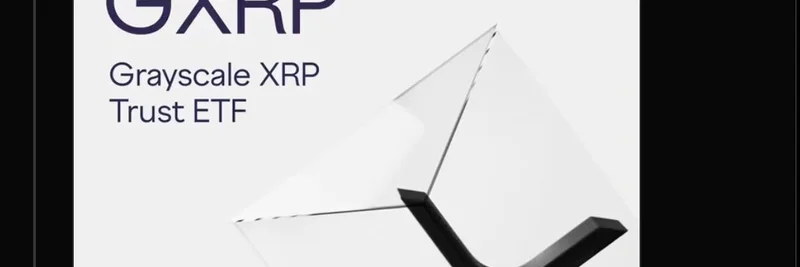Have you heard about Kaspa and its native token, $KAS? If you're into blockchain tech or meme tokens with real utility, this one's worth paying attention to. Recently, BSC News dropped a detailed analysis via a tweet that's sparking conversations in the crypto community. Let's break it down in simple terms, exploring what makes Kaspa stand out and why $KAS could be a game-changer.
What is Kaspa and the $KAS Token?
Kaspa is a cryptocurrency project that launched back in November 2021. Unlike traditional blockchains that process blocks one at a time, Kaspa uses something called blockDAG architecture. Think of it like a directed acyclic graph for blocks – it allows multiple blocks to be processed in parallel, making the network super fast without sacrificing decentralization. Decentralization means no single entity controls the network, which is key for security and fairness in crypto.
The $KAS token is the native coin powering this ecosystem. It's mineable, meaning you can earn it by contributing computing power to secure the network. What sets Kaspa apart is its fair launch: no pre-mined tokens, no initial coin offerings (ICOs), no pre-sales, and zero allocations to developers or founders. Everything starts equal – all tokens come into circulation through mining. As of March 2025, about 25.88 billion $KAS are circulating, with a total cap at 28.7 billion. That's over 90% already out there, creating a sense of scarcity as adoption grows.
Key Features of Kaspa
One of the coolest things about Kaspa is its speed. The blockDAG setup enables rapid block generation, which cuts down on the time miners wait for rewards and reduces the edge that big mining pools have. This promotes more decentralized mining, where even smaller players can participate effectively.
Then there's the mining algorithm: kHeavyHash. It's designed to be energy-efficient, which is a big win for the environment and for miners' electricity bills. Over time, mining hardware has evolved from basic CPUs to GPUs, FPGAs, and now ASICs (application-specific integrated circuits). In April 2023, IceRiver rolled out the first Kaspa-specific ASIC miners, boosting efficiency and network security. Right now, the network's hashrate – a measure of its computational power – sits at an impressive 1,200,163.4 TH/s.
Tokenomics Breakdown
Tokenomics is just a fancy word for how a token's economy is structured. For $KAS, it's all about fairness and sustainability. The max supply is fixed at 28.7 billion, preventing endless inflation. The emission schedule – how new tokens are released – started with 500 $KAS per second in 2021 and decreases gradually each month by a factor of (1/2)^(1/12), effectively halving rewards annually.
Currently, each block rewards about 61.74 $KAS, but that's set to drop to around 3.44 $KAS by May 2029 and even lower by 2037. No abrupt halvings like Bitcoin; it's smooth to avoid shocks. Since there's no pre-mine or dev allocations, every token is earned through mining, reducing the risk of dumps by insiders.
As rewards decrease, the network will rely more on transaction fees to incentivize miners. This shift could impact security if fees don't pick up, but it's a common evolution in proof-of-work (PoW) chains.
Use Cases and Utility
$KAS isn't just for speculation; it's integral to Kaspa's operations. Miners use it to validate transactions and secure the blockchain. As the ecosystem grows, $KAS could support more applications, like decentralized finance (DeFi) or non-fungible tokens (NFTs), thanks to the network's speed and low costs. While the analysis doesn't dive into specific apps, the foundation is there for building fast, scalable dApps (decentralized applications).
Pros and Cons of $KAS
Like any crypto, $KAS has its strengths and weaknesses.
Pros:
- Fair Distribution: Community-driven governance and broad ownership reduce centralization risks.
- Scarcity Mechanics: Fixed supply and slowing emissions could drive value as demand increases.
- Efficiency: Energy-saving algorithm and quick blocks make it accessible and secure.
- Market Standing: With a $1.9 billion market cap, it's in the top 50 on CoinMarketCap, showing solid traction.
Cons:
- Future Mining Challenges: With most supply already mined, reliance on fees might hurt if adoption lags.
- Diminishing Rewards: Could lead to lower hashrate if miners drop off.
- Large Supply: 28.7 billion tokens might not feel as "scarce" as Bitcoin's 21 million, potentially affecting perception.
Why This Matters for Crypto Enthusiasts
In a world full of hype-driven meme tokens, Kaspa offers a refreshing take with real tech innovation. The original tweet from BSC News highlights this analysis as a must-read for anyone curious about layer-1 (L1) blockchains. Whether you're a miner, investor, or just exploring, understanding $KAS can give you an edge in spotting undervalued projects.
Kaspa's design balances speed, fairness, and security, positioning it as a strong PoW contender. As the crypto space evolves, keep an eye on how networks like this adapt to fee-based models. If you're diving deeper, check out the full guide on BSC News for more stats and insights.
Remember, this is educational – always do your own research (DYOR) before investing. What's your take on Kaspa? Share in the comments!

